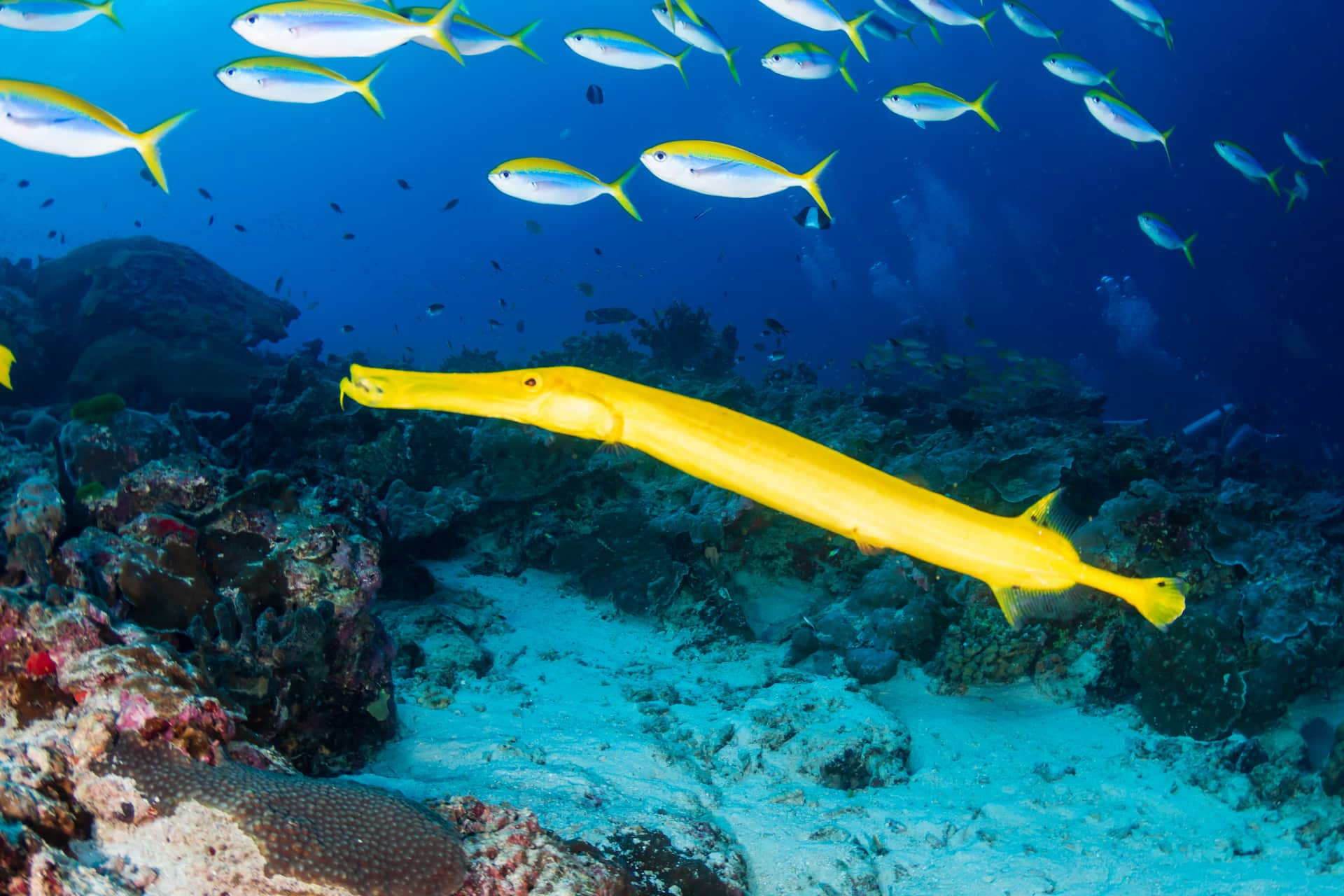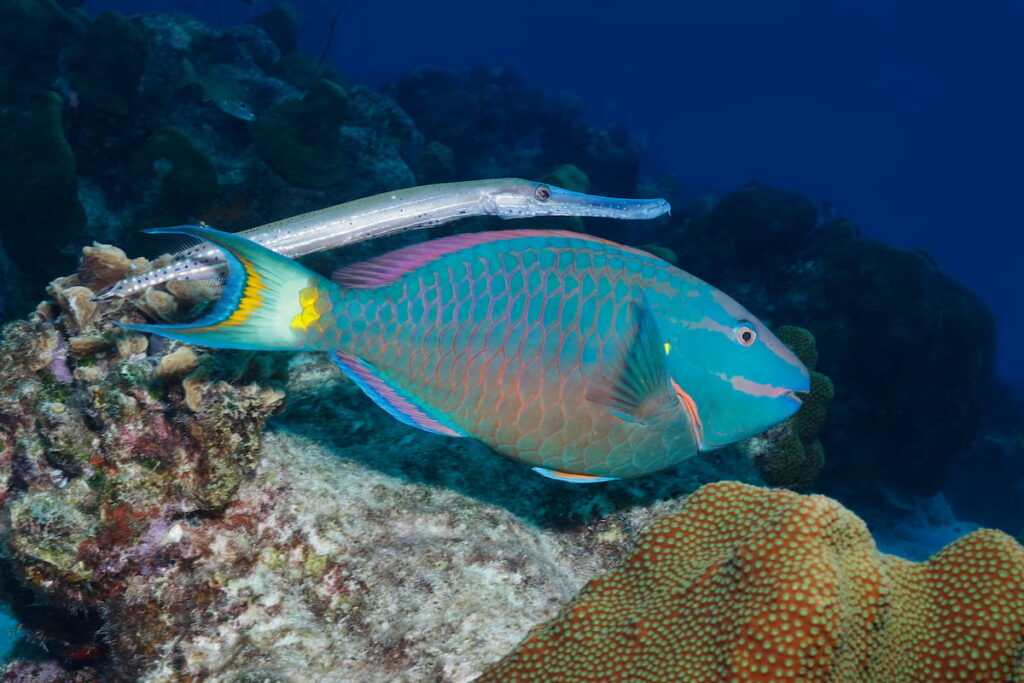Get Loud for Trumpetfish
These tubular fish are masters of disguise

Did you know that scientists estimate there are trillions of fish alive in our ocean today? About 20,000 marine fish species are currently known to science, and sometimes it can be hard to tell them apart. Some fish, however, are so unique that you can identify them in what feels like an instant. Let’s dive in and meet one of these stars of the sea: the trumpetfish.
Thriving in shallow reef ecosystems of the Atlantic, Pacific and Indian oceans, trumpetfish are cousins to seahorses and pipefish, and their similarities go beyond their appearance. Just like seahorses, female trumpetfish rely on males during gestation. They transfer their eggs to a male’s special pouch, where the eggs are then fertilized and incubated until it’s time for larvae to be released into the sea.
Get Ocean Updates in Your Inbox
Sign up with your email and never miss an update.
Also similar to seahorses, they have dramatically elongated bodies with tubular snouts (proportionally longer than seahorses). These carnivores are quite a spectacle to see, and their straw-like mouths are designed to quickly suck up prey such as small fish, shrimp and other tiny invertebrates.
Though very identifiable to us, trumpetfish aren’t always so easily spotted by their prey. They use a combination of camouflage and ambush tactics to strike prey before the unsuspecting target knows what happened.
First, trumpetfish have understated, transparent dorsal and anal fins that enable them to swim both backward and forward (usually vertically) without attracting attention. They use these fins to hover virtually motionless near corals and rocky ledges, waiting for the perfect moment to spring into action. While they activate “stealth mode,” cells called chromatophores help them to blend in with their surroundings. These cells are even thought to help male trumpetfish impress females during courting season, though their primary role is to provide a masterful disguise.
It’s fascinating that camouflage isn’t the only tool that these strategic sea stalkers have under their belts. Trumpetfish are also known to exhibit very cunning behavior. Many trumpetfish prey live in or around seagrass beds or soft corals, where small fish are known to hang out. When fish schools are nearby, trumpetfish will swim alongside them, patiently waiting until their desired prey is pushed out into the open.

Once a target has been spotted, it’s ambush time. Pouncing at prey with their mouths in a quick darting motion, a trumpetfish then sucks up its meal like a straw before swallowing it whole. These fish even have specialized jaws that can open to nearly the size of their entire body, if needed.
While what scientists know about trumpetfish is fascinating, in reality, there’s still much we need to understand about these animals. They are tricky to spot in the wild (probably partially due to their excellent hide-and-seek skills), and there isn’t currently enough known about them to properly estimate their conservation status. Regardless, trumpetfish rely on healthy, thriving coral reefs and seagrass beds. The deterioration of these ecosystems as a result of the impacts of climate change, such as ocean acidification, poses a threat for these unique marine animals.
A diverse, healthy ocean full of thriving wildlife depends on what we do today to protect our blue planet. Ocean Conservancy is working on the frontlines of ocean protection, striving to develop, implement and support evidence-based solutions to our ocean’s biggest challenges, including climate change.
Take action today and tell your representatives that ocean climate action is not a want, but a need. Animals like trumpetfish, and so many other species, are counting on us.